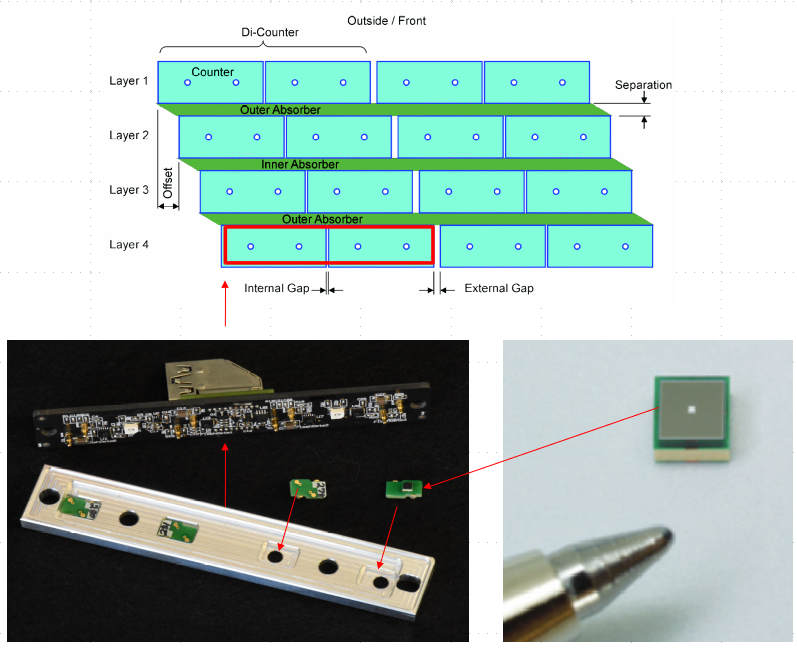Mu2e
⚠ (:notitle:)
The Mu2e Cosmic Ray Veto System
In 2015 I joined the the Mu2e experiment at the Fermi National Accelerator Laboratory (Fermilab) to work on the cosmic ray veto (CRV) system. The CRV designed to identify incoming cosmic rays with an efficiency of 99.99% in order to suppress signals from cosmic ray interactions that mimic the muon-to-electron conversion signal. Cosmic ray detection is provided by four layers of scintillation counters with embedded wave length shifting (WLS) fibers connected to multi-pixel photon counters (MPPCs) on a mounting block as shown in Figure 1.
Hamamatsu MPPCs tests
|
I've been primarily working on analysis of radiation tests of Hamamatsu MPPCs . To meet the CRV detection efficiency requirement, summed signals from photodetectors at each end of a scintillation counter should provide a photoelectron (PE) yield of at least 25~PE/cm from a minimum ionizing particle traversing at normal incidence one meter from the counter end. The entire system will require 19,840~MPPCs, which are expected to accumulate a maximum radiation fluency of approximately 1 x 1010~neutrons/cm2 from 1 MeV equivalent neutrons over the three year lifetime of the Mu2e experiment (expected to start in 2020). Contributions to the project
Links |
 Figure 1. The four layers of CRV counters (top); the MPPC mounting block (bottom left); the 2.0mm x 2.0mm s13360-2050VE Hamamatsu sensor (bottom right). |